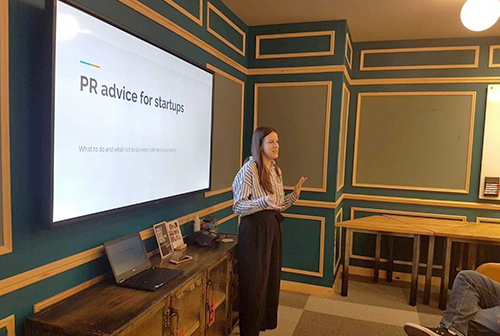Intern’s Guide: How to Write a Blog Post

Thud. Banging your head on the table. It’s dubbed thought leadership. But why aren’t your thoughts leading? It can’t be as long-winded as a novel yet not as objective as a news article. Scrunch! That’s the third idea in the bin.
You’re not alone!
Forever nudging the copywriters to have a look at my ‘revised’ version and dodging their subsequent stares, I committed myself to master this medium.
Barricaded in my very own Batcave, dimly-lit lamps and two or three empty coffee mugs, I began to crack the Da Vinci Code.
The world’s largest rush hour
Generally, people are very busy, so we want to catch them when they have a few minutes to spare. Whether it is on the train, at lunchtime etc.
If you imagine London’s congestion multiplied by 100,000, it would still fall short of the amount of traffic on the internet. Thus, the internet is the noisiest market known to man. All bloggers are fishermen. And all fishermen need bait.
As the profession suggests, you should be a master of the (inter-)‘net’ and ‘hooks’. And titling is the bloggers’ best weapon.
Frame your titles in ways which let the reader know the value the blog provides, as simply as possible. Jargon? Implied concepts? Don’t! Your audience needs to be ‘spoon-fed’ why your blog is the ‘right’ distraction. Your headtitle needs to lay out exactly what they will get in a clever catchy way. Think about why you bothered to read this blog.
Once you have them ‘hooked’, you need to keep them. Include quirky yet relevant subtitles to segment different sections. Make them bold (it sticks out better when scrolling). It’s a subtle reminder of the value your blog provides. A combination of carefully worded and chosen titles can make all the difference.
Respect the Scroll
Whether it be a click, drag, slide or roll, the ability of web surfers to scroll up and down changes the reading experience fundamentally.
Under gleaming screen light, scrolling transforms human beings into goldfish. Well, just their memory. Their retention span becomes thin and their patience thinner.
People read books but skim blogs. The scroll bar gets through content more quickly than turning pages. And, sadly, online content is consumed in an almost narcotic fashion. We want our fix. Anything that seems too dense loses our interest and won’t survive the scroll bar.
Keep to the point. Use condensed paragraphs and sentences: five lines per paragraph should be the maximum. If you can’t make the point in that way then you need to think again – maybe this isn’t suited to a blog post after all.
Add your own flavour
When someone reads your blog, they devoted some precious seconds in order to read it, so be brave enough to add in your own opinion and flair. The reader chose you for a reason. The reader is hoping you’ll succeed, to prove they didn’t waste their time.
It’s tempting to stay on the fence, in fear of saying something stupid because you’re the newbie. But you still have experiences and opinions. Share them. And someone will doubtless review it before it goes public!
Summary
Blogs bank on the unfortunate ‘goldfish’ in us, surfing the net looking for something relevant and entertaining. It’s called the ‘net’ for a reason. Become the best fisherman by tailoring your repertoire with the medium and audience in mind. With these tips, you may be ready to set up shop in the world’s largest rush hour. Just remember to respect the scroll.










